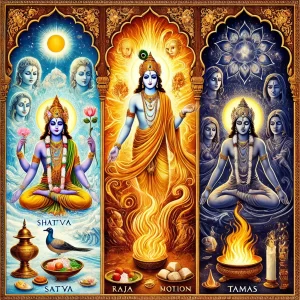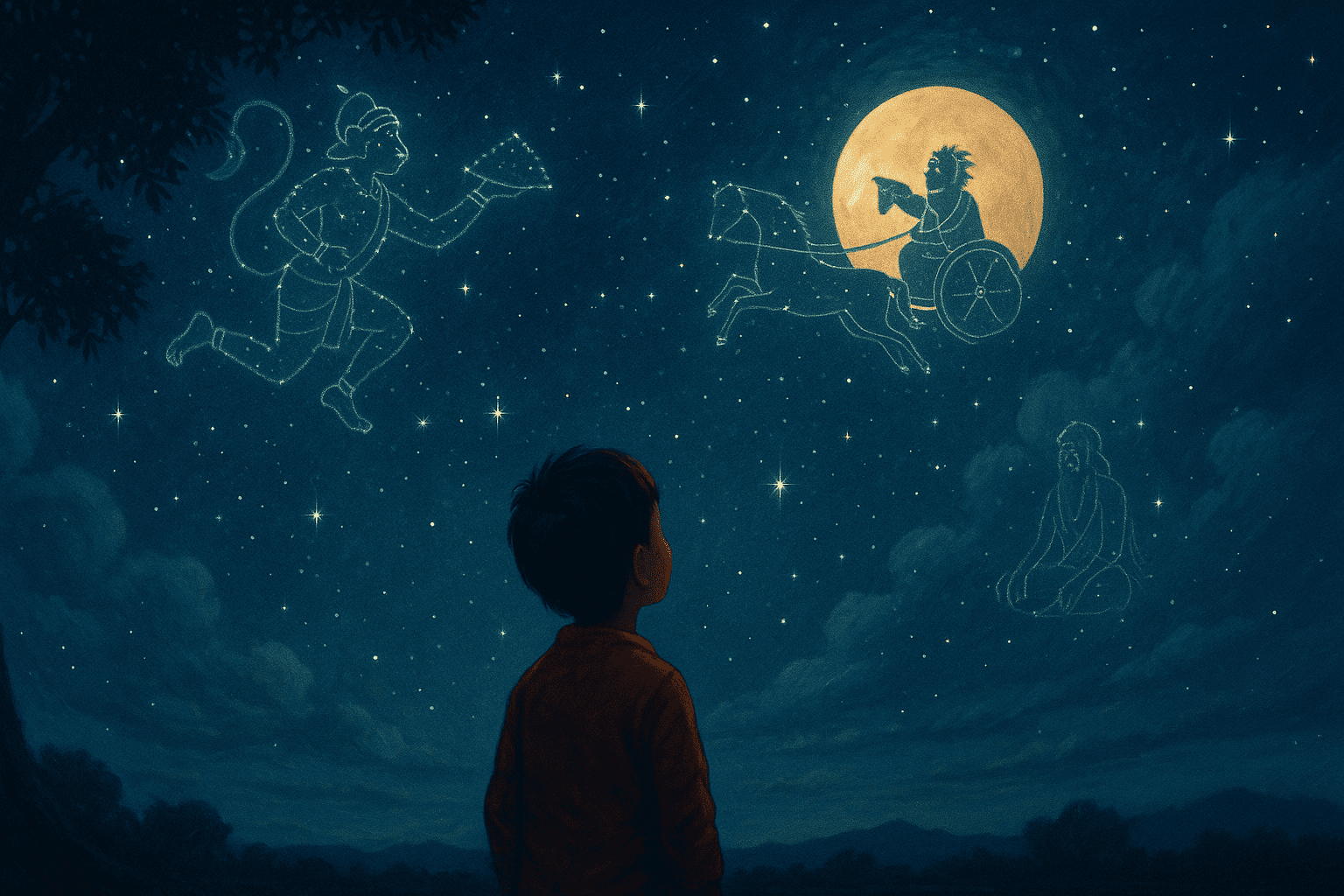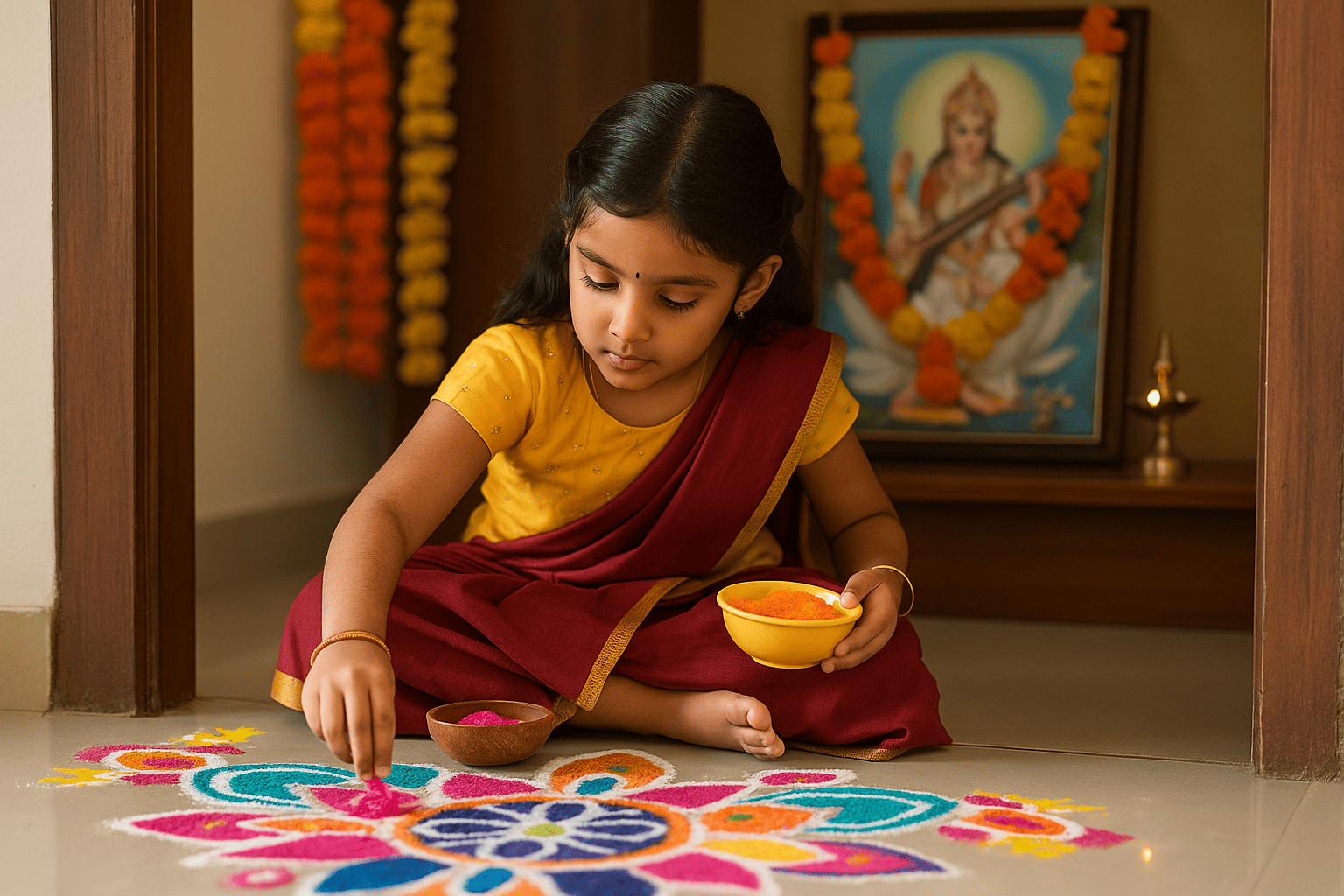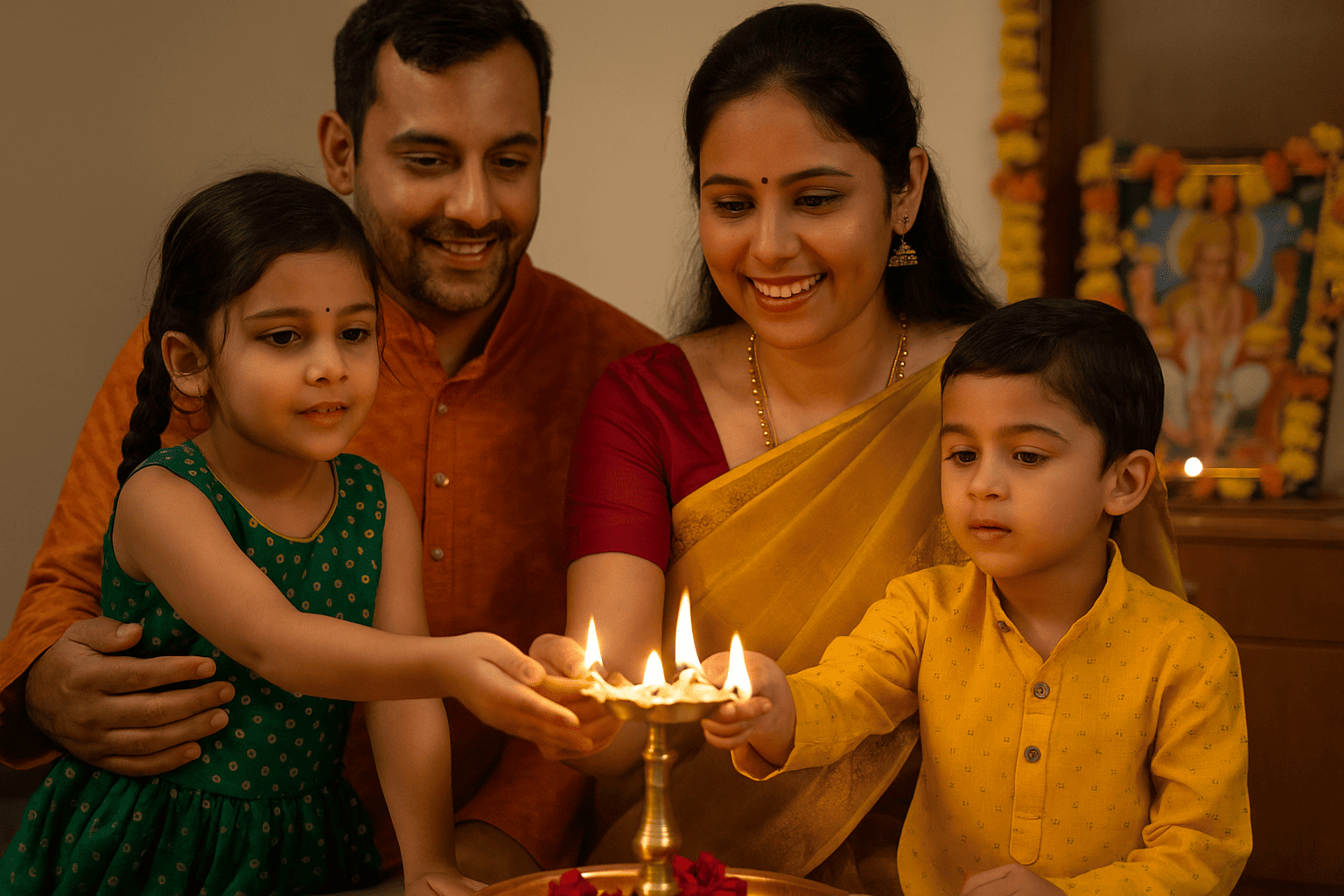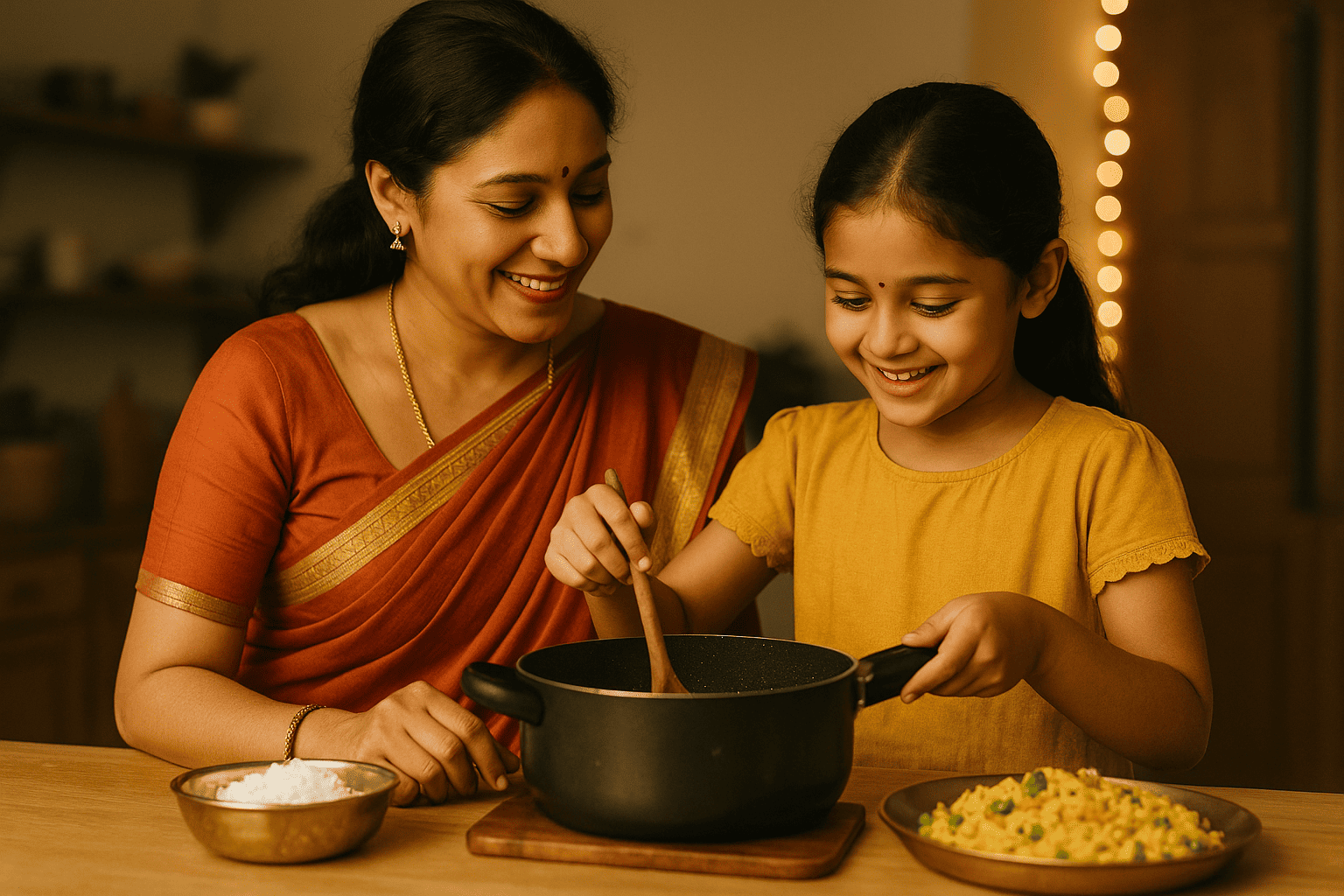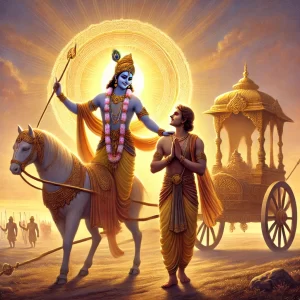
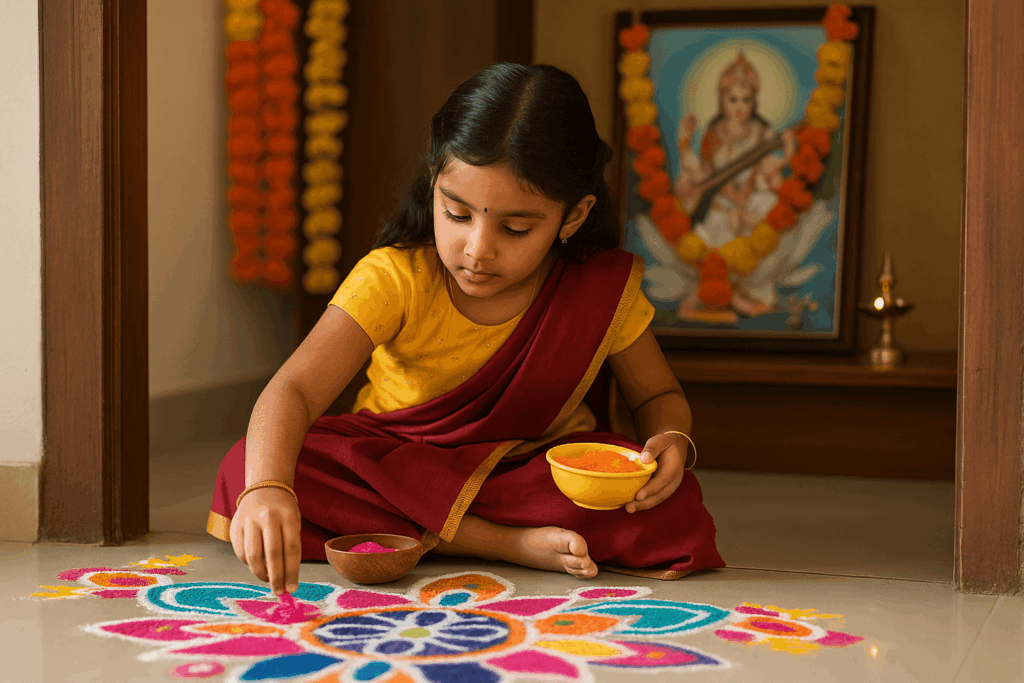
Children understand the world first through their hands. Before they can pronounce the names of gods or recite the lines of a sloka, they are already fluent in shape, line, and colour. Through art, children do not just observe culture. They begin to participate in it. A sheet of paper becomes a place to play with identity. A handful of petals becomes a quiet prayer. A box of crayons becomes a doorway into tradition.
For families raising children within Hindu culture, art offers a gentle yet powerful bridge. It brings spiritual ideas out of books and into the spaces children already love. The process of drawing, painting, decorating, and crafting allows children to engage with culture on their own terms, using a language they instinctively understand.
Many Hindu homes already carry visual traditions without needing to create anything new. Kolam or rangoli patterns on the doorstep greet each morning with purpose and symmetry. Bright powders, often made of rice flour or natural colours, are arranged in patterns that welcome guests and mark sacred space. Garlands of mango leaves are strung across doorways to invite blessings and keep negative energy away.
These are not merely decorative. Each design, colour, and symbol carries meaning. Inviting children to take part in these traditions helps them see that culture is not something distant. It is something that lives alongside them, ready to be touched, shaped, and made their own.
A child who learns to draw a simple kolam pattern on the floor is learning not just geometry or balance, but reverence. They begin to understand that art is a form of offering. It is a way of making the ordinary sacred.
Art becomes even more meaningful when children are given space to interpret and explore cultural symbols through their own eyes. During Navaratri, for example, they can draw Saraswati holding her veena, placing their artwork near the books and musical instruments displayed for the goddess of learning. For Diwali, they can decorate clay lamps with paint and glitter, creating their own set of diyas to light the home.
During Thaipusam, children might cut out a cardboard Vel, colour it with gold or silver pens, and place it beside a framed image of Lord Murugan. On Krishna Janmashtami, they can make little footprints with blue paint, guiding guests from the doorstep to a small altar.
When children participate in festivals this way, they are not only observing the celebration. They are helping shape it. Their drawings, their handmade garlands, and their small creations become part of the family’s expression of devotion.
One simple way to encourage cultural creativity is to set up a “culture craft box” that is always available. This box could include crayons, coloured paper, flower petals, bits of turmeric-stained cloth, old rangoli powders, glue, string, and beads. It does not need to be expensive or elaborate. What matters is that it remains ready, inviting children to explore whenever inspiration strikes.
You might also include stencils of traditional symbols like the Om, lotus, sun, or conch shell. These shapes appear again and again in Hindu design and architecture, and children naturally enjoy tracing and colouring them. The craft box then becomes more than a storage space. It becomes an invitation to connect with culture through play.
The greatest beauty of this process is that it transforms a child’s creativity into something sacred. A puja plate decorated with uneven brushstrokes becomes a beloved part of Diwali preparation. A handmade garland placed around a deity’s frame feels no less authentic than one bought from a shop. What a child creates with intention and care becomes meaningful.
In this way, children begin to understand that devotion is not limited to what is spoken or memorised. It can also be drawn. It can be sculpted, folded, traced, and painted. Art becomes a form of prayer that speaks in the language of colour and shape.
Long after the paint has dried and the paper has curled at the edges, children will remember how it felt to create something that mattered. They will remember the smile on your face when they showed you their handmade Vel or their rangoli beside the door. These small acts become early memories of cultural pride. They begin to form the inner scaffolding of identity.
Children who create culture with their own hands carry it differently. They are more likely to feel it belongs to them. They are more likely to grow into adults who feel confident expressing that identity in their own way, through the arts, through their homes, and through how they raise the next generation.
In a world that often expects children to sit still and listen, art gives them the space to move, explore, and speak. It gives them a way to enter Hindu tradition through their own curiosity and creativity. This entry point is not only accessible. It is joyful.
Culture becomes something they can colour in. It becomes something they are allowed to change, shape, and carry with pride. Through art, tradition becomes a canvas. In every drawing, in every design, in every handmade diya, a child learns that their voice has a place in the story.

